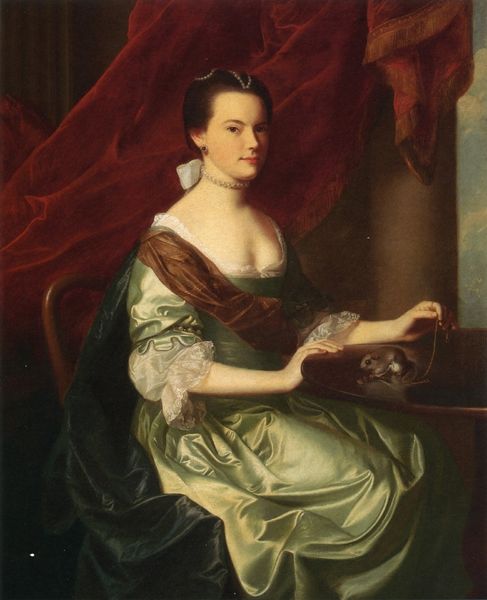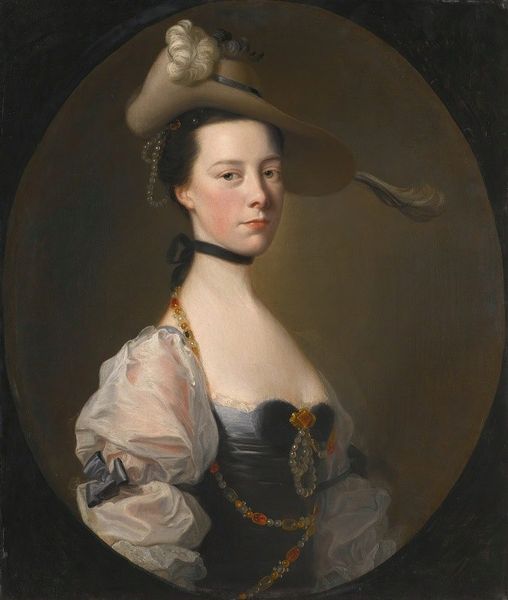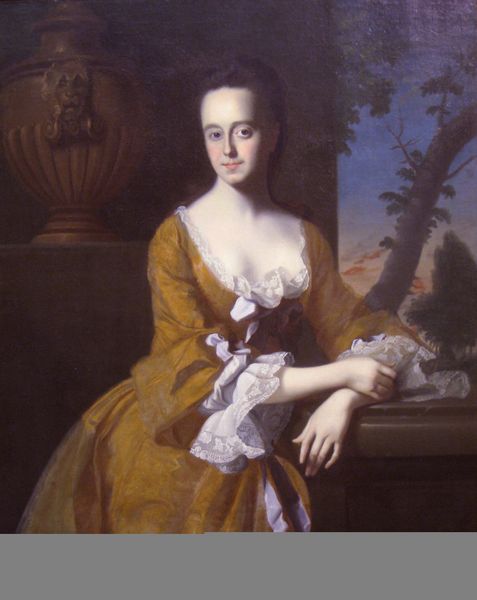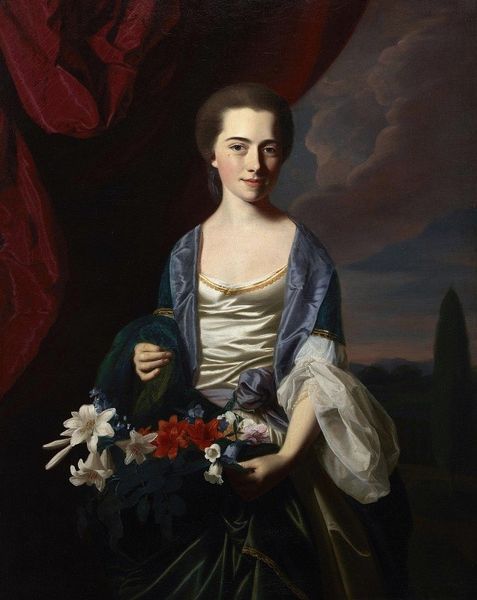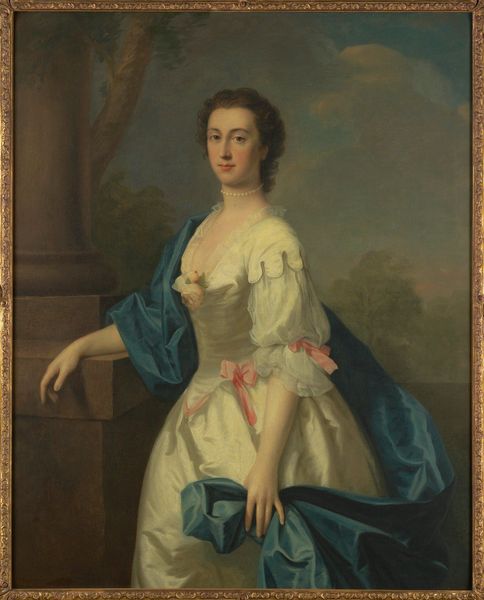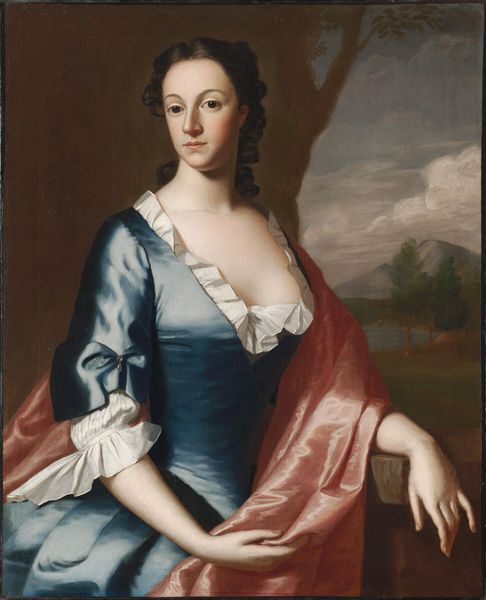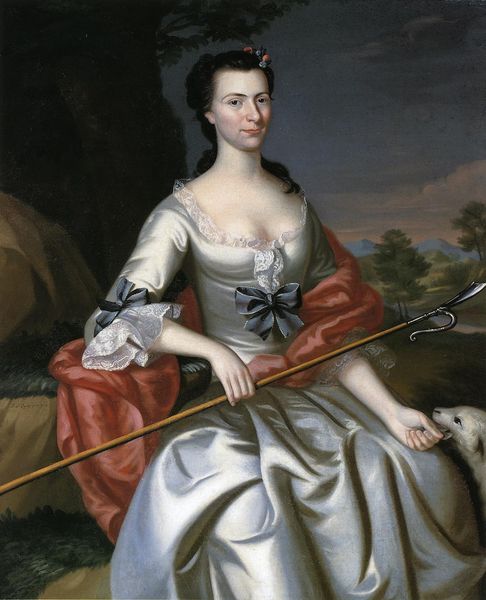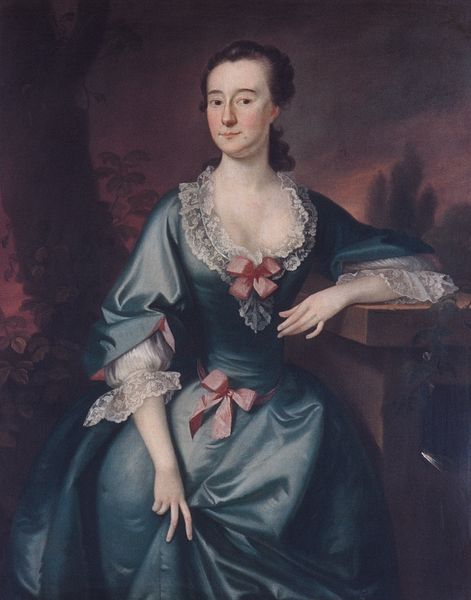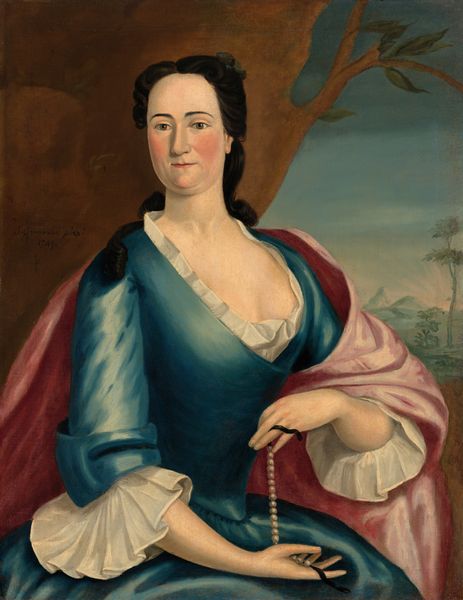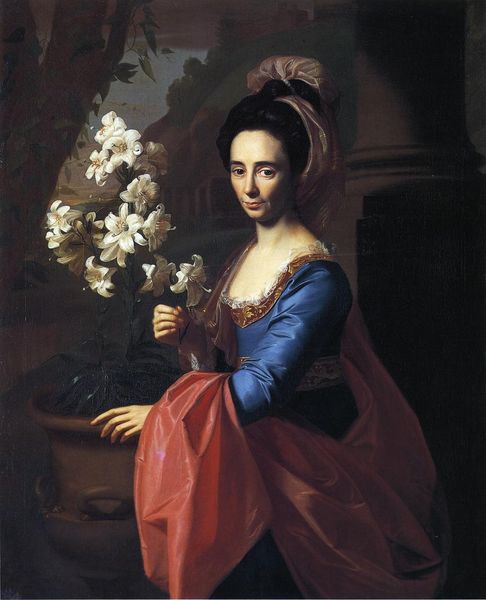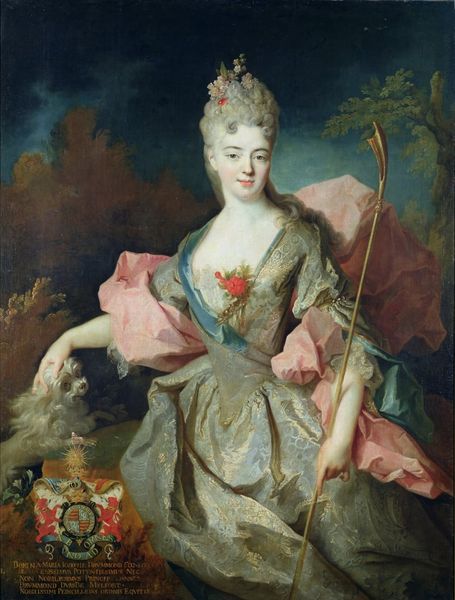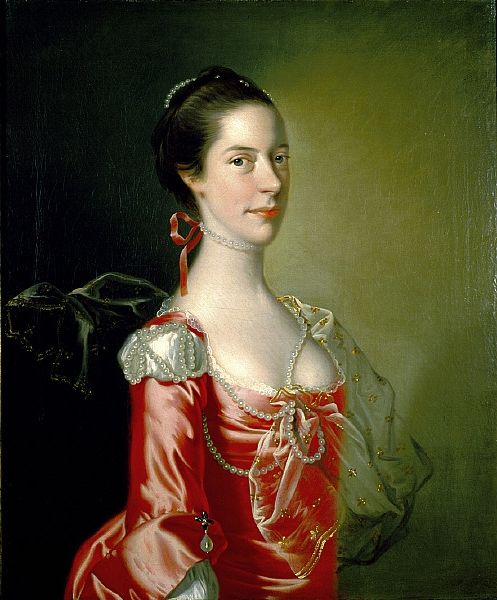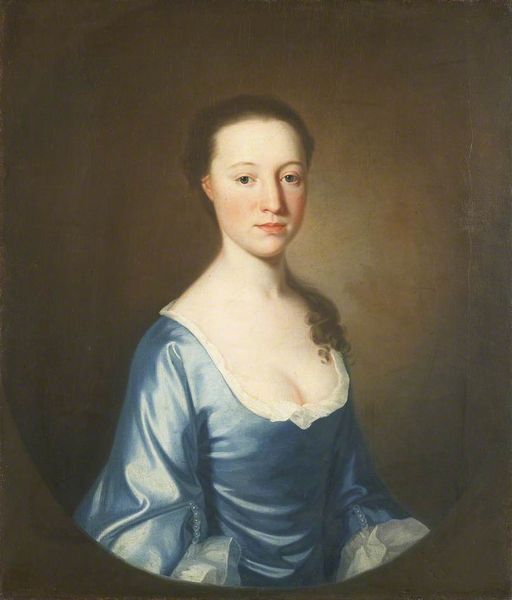
Copyright: Public Domain: Artvee
Editor: So, here we have John Singleton Copley’s portrait of *Elizabeth Gray Otis*, dating from about 1764. It’s oil on canvas, and it’s striking how she's positioned outdoors with that rather dominant staff, and such an enigmatic gaze. What do you see in this piece beyond it being a typical portrait of the time? Curator: Immediately, I am struck by the pastoral staff she holds – a symbol echoing classical antiquity. The shepherdess, an Arcadian figure. What does it signify here? Is she literally a shepherdess? Or does it allude to a cultivated image of leisure, power and responsibility of her role in society? Editor: So the staff isn’t just an accessory? I’d assumed it was a fashionable prop, nothing more. Curator: Indeed, and note the flowers adorning her hair, symbols of youth and fertility, intertwined with the rod, symbol of authority and the pastoral landscape beyond, framing her within an idealised, yet very controlled natural order. What emotions do these symbols evoke when you see them all together? Editor: It creates an interesting tension. I get a sense of poised expectation. Not passive, but perhaps… reserved power. Was Copley making a specific statement about Elizabeth Gray Otis’s place in society? Curator: I think that’s absolutely a layer within it, this painting functions as both a presentation of the sitter but also aspiration within colonial American society – which was self-consciously building a new social order for itself borrowing ideas and imagery from Europe. She is carefully presented using iconographic languages that project refinement and grace while subtly alluding to colonial power dynamics and aspirations for self-rule. What an incredible encapsulation of its moment! Editor: I’m looking at it in a completely new light now. It's more than just a portrait; it's a carefully constructed representation of colonial ideals. Thank you!
Comments
No comments
Be the first to comment and join the conversation on the ultimate creative platform.
